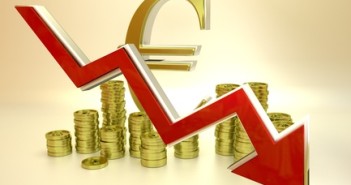Some market analysts have cast doubts if the ECB will indeed push through with QE already at the January 22nd meeting. And if a 500 billion euro program is already priced it, the euro could bounce back up, right?
Well, the team at HSBC offers a different view: seeing the euro fall even if Draghi doesn’t deliver:
Here is their view, courtesy of eFXnews:
The EUR sell-off is likely to extend in the run-up to the ECB meeting on 22 January, even though it is possible that much is already in the price and the market has become overextended, says HSBC.
“There is clearly some scope for disappointment. For example, the ECB could do nothing at its January meeting, or announce a programme that underwhelms in terms of scale or scope of assets to be bought, or else merely announce that such a programme will be implemented at some future date. Each of these outcomes would likely see a spike higher in the EUR,” HSBC explains
However, HSBC thinks that while the squeeze could be painful, the overall outlook for a lower EUR would remain unchanged arguing that the problem for those who want to try a “sell the rumour, buy the fact” strategy is that there is a sense of inevitability about QE from the ECB.
“It has become more a question of when rather than whether…The simple reality is that even if the ECB were to disappoint by not delivering QE in some shape or form, the market would assume that the central bank is merely delaying the inevitable. Any rally in EUR on such inaction by the ECB would likely be sold into swiftly,” HSBC argues.
“So while much is already in the price, positioning is getting stretched again, and the risk-reward around the announcement effect of January’s ECB meeting is for a higher EUR, we still expect EUR-USD will be lower by the end of the month. We look for EUR-USD to challenge the 2005 low of 1.1640,” HSBC projects.
For lots more FX trades from major banks, sign up to eFXplus
By signing up to eFXplus via the link above, you are directly supporting Forex Crunch.
